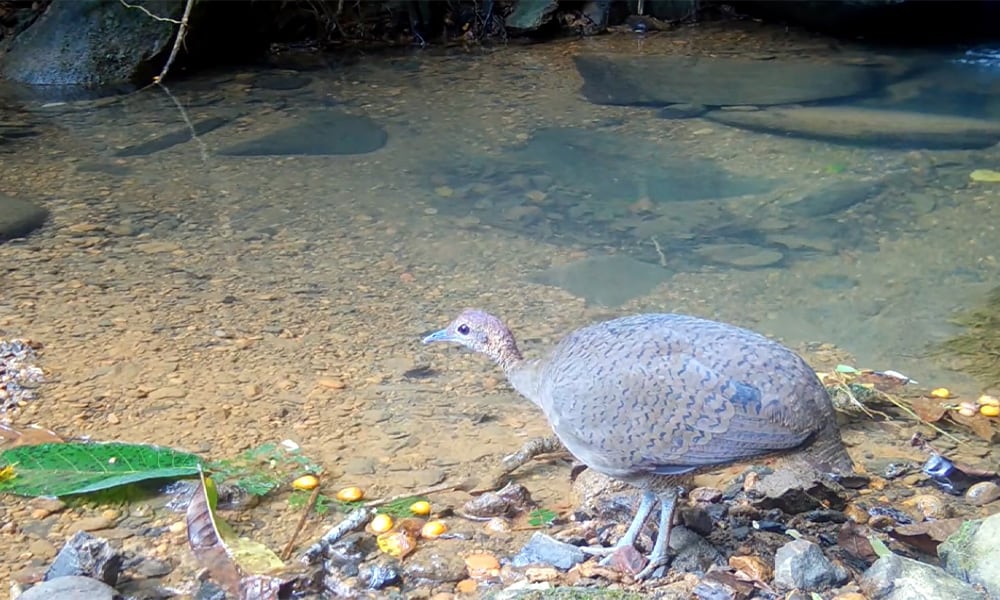Let’s meet the great tinamou, a large ground bird with a pretty song and interesting mode of reproduction.
The great tinamou (Tinamus major) is one of the five species of tinamou in Costa Rica. Like many, if not all of the others, it’s commonly known as the gallina de monte. If you’d like to get more specific, you can call it the tinamú grande.
Great tinamous are large birds. They stand about 17 inches high and weigh up to 1 kilogram. They have a small head on top of a slender neck that leads to a big round body. At first glance their coloring looks plain, a solid brown/gray bird. If you can get a closer look, they’re actually quite pretty. They have a dappled brown head, and their bodies have an intricate pattern of black bars and flecks.
Like the thicket tinamou, the great tinamou is famous for its song. Often heard as the sun is setting, it belts out two to four pairs of deep, powerful whistles. Again, one of my bird books knocks it out of the park with its description. It describes the great tinamous call as velvety with a swelling quality that’s among the most stirring sounds of the tropical forest. I love when mostly scientific books show a little emotion.
Unless it’s breeding season when you’ll spot them in pairs, great tinamous are solitary. They spend their days wandering the floors of humid forests poking around the fallen leaves and underbrush in search of food in form of seeds, fruits, and small creatures like insects, spiders, and small reptiles.
Great tinamous have an interesting breeding strategy that features exclusive male parental care. Each breeding season female great tinamous mate with several males and deposit an average of four large, shiny, bright blue or violet eggs in the male’s shabby nest. When the eggs hatch, the male is charged with looking after the downy chicks for several weeks.
For me, great tinamous are placed in the “Aaahhh!” category of animals that I encounter in Costa Rica’s forests. Like the afore mentioned thicket tinamou and the agouti, they have a habit of scaring the bejesus out of me when I stumble upon them in the underbrush. An unnoticed great tinamou waits for me to get a little too close and then explodes out of the bushes with feathery wingbeats and flies a short distance to safety.
When I have camera traps placed in the humid forests that great tinamous call home, I record them frequently. Even though they’re generally not doing much in the videos, I still enjoy them simply because they’re a little different from the thicket tinamous that I’m used to recording. Don’t take my word for it, have a look yourself, click on the video below and get to know the great tinamou.






